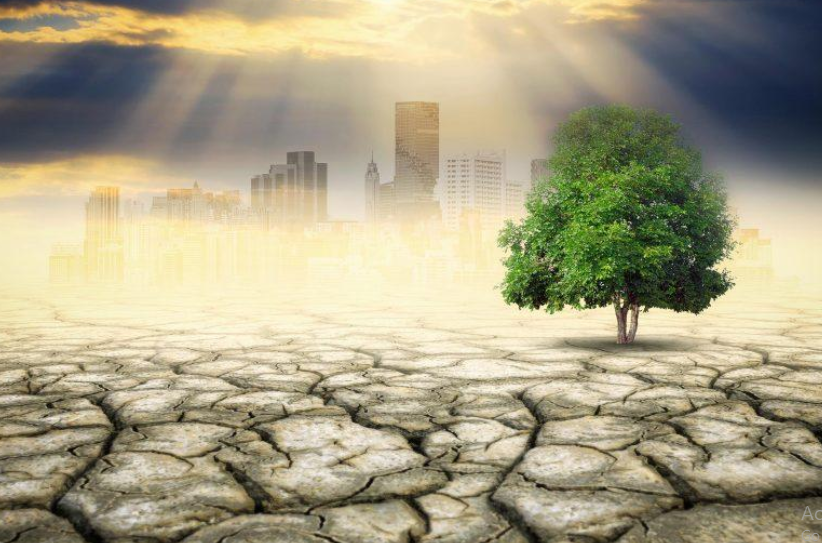Earth Approaching Climate Tipping Points: Cascading Devastation in Store

Image courtesy: scitechdaily.com
Roughly, five million tonnes of carbon dioxide is getting into the atmosphere every hour as a result of various anthropogenic activities. This enormity of man-made carbon emissions has pushed the planet to an alarming level of warming. Scientists are now remarking that the Earth is fast approaching close to a no-return threshold, beyond which there will only be an unlivable hothouse.
In a recent commentary that appeared in Nature, titled “Climate tipping points—too risky to bet against”, a group of scientists have warned the world community that “we have reached a position where more than half of the climate tipping points deciphered a decade back, are now active. This is alarming. Crossing the tipping points will throw us into a climatic condition from where it will be impossible to come out, no matter what efforts are made.”
The climate tipping points denote the critical points or threshold of the planet’s complex climate system. Timothy Lenton, the lead author of the article, was one of the pioneering men who studied what the climate tipping elements are and also could quantify when these tipping elements can cross a critical point—the tipping point. In the research done in 2008 by the team led by Timothy, they defined tipping point as—“Critical threshold at which a tiny perturbation can qualitatively alter the state or development of a system.” They identified 15 such tipping elements whose critical balance is extremely crucial for sustenance of Earth’s climate.
The latest commentary said that nine out of those fifteen tipping elements are active, which means that the Earth’s climatic condition is progressing in such a fashion that very soon the nine climate tipping points would be crossed. They are:
-
Arctic sea ice
-
Greenland ice sheet
-
Boreal forests
-
Permafrost
-
Atlantic meridional overturning circulation
-
Amazon rainforest
-
Warm-water corals
-
West Antarctic ice sheet
-
Parts of East Antarctica
“A decade ago we identified a suite of potential tipping points in the Earth system, now we see evidence that over half of them have been activated. The growing threat of rapid, irreversible changes means it is no longer responsible to wait and see. The situation is urgent and we need an emergency response," said Tim Lenton, director of the Global Systems Institute at the University of Exeter.
“It is not only human pressures on Earth that continue rising to unprecedented levels. It is also that as science advances, we must admit that we have underestimated the risks of unleashing irreversible changes, where the planet self-amplifies global warming. This is what we now start seeing, already at 1°C global warming. Scientifically, this provides strong evidence for declaring a state of planetary emergency, to unleash world action that accelerates the path towards a world that can continue evolving on a stable planet,” said Johan Rockström, co-author and director of the Potsdam Institute for Climate Impact Research.
Active tipping points threaten the loss of the Amazon rainforest and the great ice sheets of Antarctica and Greenland. These crucial climatic zones are currently undergoing measurable and unprecedented changes much earlier and faster than expected. The collapse of the great ice sheets of Greenland and Antarctica, both East and West, would lead to a sea level rise of up to 10 meters irreversibly.
The rainforest, permafrost and boreal forests are the biosphere tipping points which, if crossed, would result in the release of an enormous amount of greenhouse gas, which will potentially amplify the global warming.
Although future tipping points and the interplay among them is not easy to predict at this moment, the scientists say that if damaging tipping cascades can occur and a global tipping cannot be ruled out, then this is an existential threat to civilisation. “No amount of economic cost-benefit analysis is going to help us. We need to change our approach to the climate problem,” the commentary stated.
One of the serious issues of discussion at COP25, which started in Madrid on December 2, is the irreversible climate change that is in store in the near future. It will be important to see how the countries plan and implement to reach the goals of the Paris Agreement. While the US, one of the biggest contributors to carbon emissions, has formally withdrawn from that Agreement, the EU has declared a climate emergency.
It will be extremely difficult to exit the fossil fuel economy before 2050, but with the temperature already exceeding 1.1 degree Celsius of pre-industrial level, Earth is very likely to cross the 1.5 degree guardrail by 2040. The authors warn that this alone is sufficient to define a climate emergency.
When the Intergovernmental Panel on Climate Change (IPCC) introduced the idea of tipping points two decades back, it was thought that these are likely when global warming would exceed 5 degree Celsius of pre-industrial levels. But recent IPCC reports suggest that the tipping points can be crossed even between 1 and 2 degree Celsius of warming.
Get the latest reports & analysis with people's perspective on Protests, movements & deep analytical videos, discussions of the current affairs in your Telegram app. Subscribe to NewsClick's Telegram channel & get Real-Time updates on stories, as they get published on our website.
























